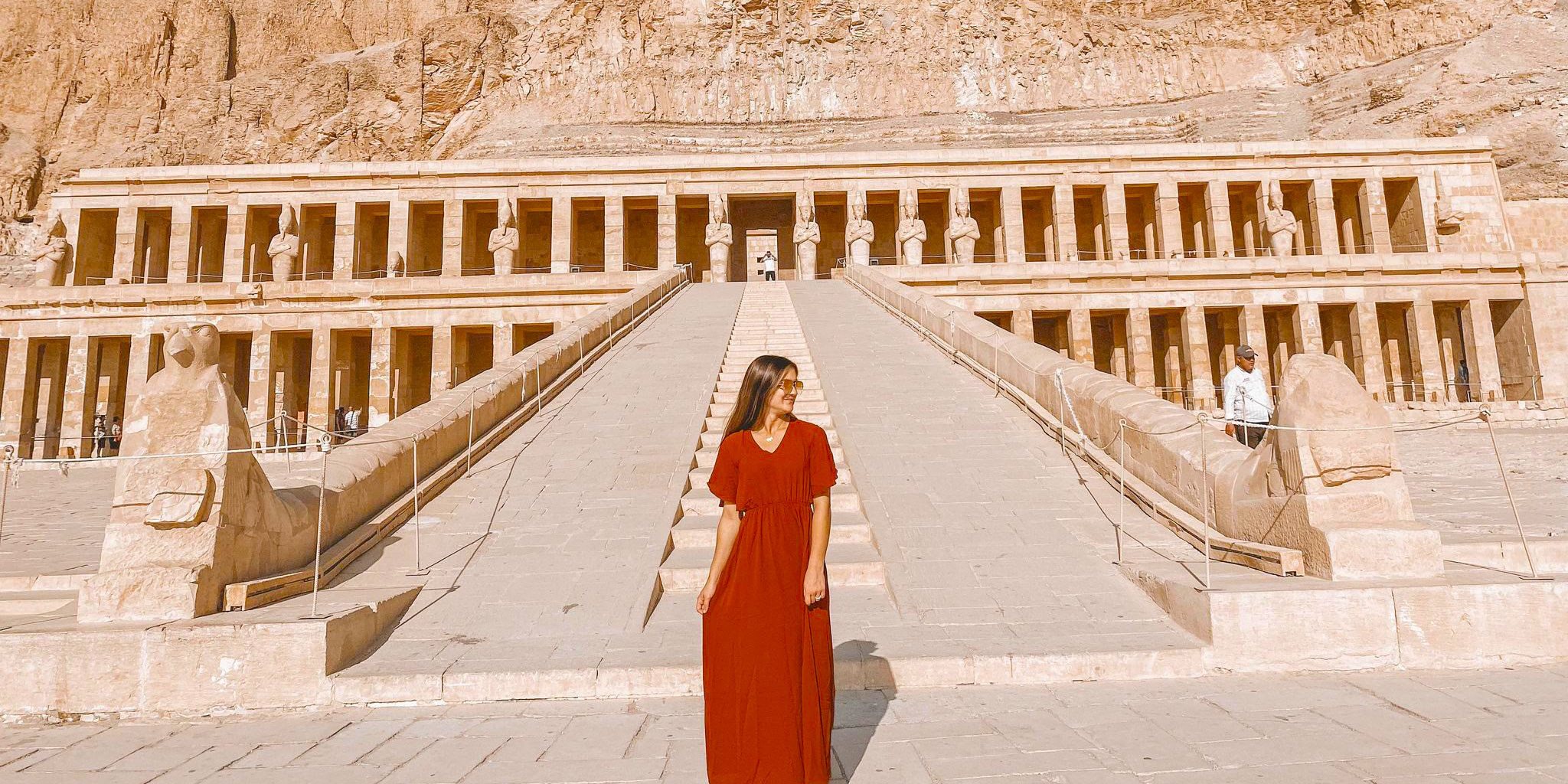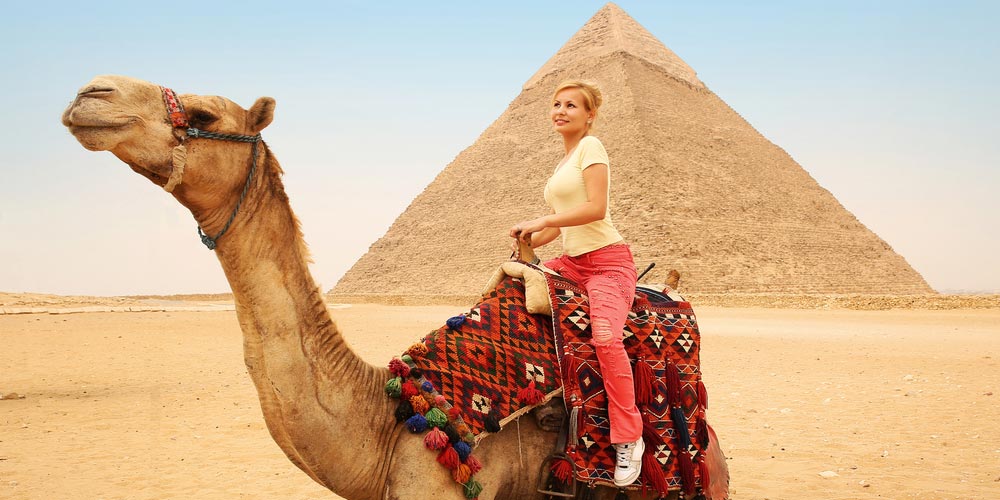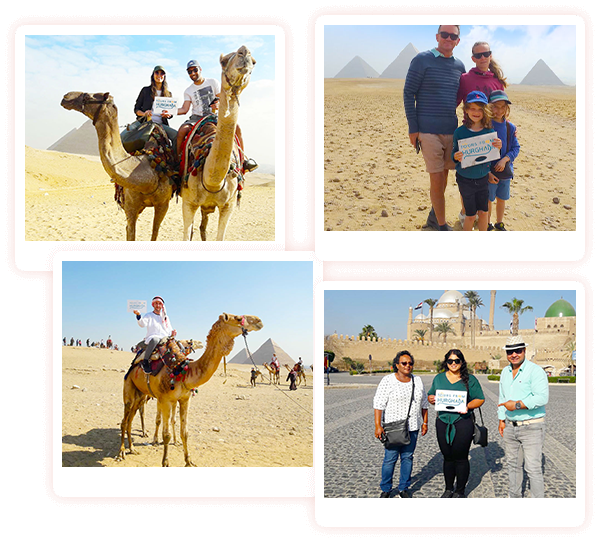The History of Luxor
There is no place in Egypt that can reflect the might and greatness of ancient Egypt more than Luxor City! The original name of the city was "Waset", which means "The City of The Scepter", or "The Shrine"! The Greeks changed the name to Thebes which, later, became Thebes, that’s also, "The City with 100 Gates". The importance of Luxor City grows during the 11th Dynasty (1938-1756 BC) when the capital of Egypt was Memphis, and Thebes was under the control of foreign invaders called the Hyksos. Nonetheless, the city was freed by King Ahmose and the Hyksos were driven out between 1530 and 1520 BC. Then, came the New Kingdom (1550-1070 BC), where the city became the capital of Upper Egypt, and a universal hub for all the political, religious, and military aspects of Ancient Egypt. From the 18th to the 20th Dynasty, many kings and queens established many temples to honor the gods, in order to win their favor.
In the 18th Dynasty, Akhenaton (1353-1336 BC) attempted to force Atonism (the worship of the only god Aton) but failed, and then came the surfer of distress and disturbance. the city’s glory was restored again by the hand of the New Kingdom's many kings and queens! They designed & constructed great temples to immortalize their legacies, such as Ramses II (1279-1213 BC) and Hatshepsut (1507- 1458 BC).

The City’s Importance, Spiritually and Historically
It was God Amun, later on, Amun-Ra’s center of worship! The city also became the worship for the Goddess of Truth & Justice, Mut, and her son, Khnosu, the Moon God, in the Luxor Temple, where the famous festival of Opet took place. Even after Luxor fell under the hand of foreign invaders, like the Persian, Greek, and Roman Empires, Luxor City still acted as an important place of religious & spiritual reflection!

Luxor City Location and Map
Luxor’s location is quite interesting as it’s located in Upper or Southern Egypt, on the East Bank of the Nile River. It has an area of 417 square KM (161 SQ M) and a population of 506,558 individuals!

Famous Tourist Attractions in Luxor

The attractions in Luxor City are absolute wonders as the site became a World Heritage Site by UNESCO in 1979, and is famous for being one of the most visited places in Egypt. Every letter aligning the city’s history was inscribed at the hands of mighty figures accompanied by intense power and limitless respect! The ancient pharaohs that once took care of Egypt, and still do with their lingering souls in the city, ruled a nation through prosperity and retraction, which is obvious in the values that each of the city’s ancient landmarks, the pharaohs left behind, present! It gained the reputation of being the world's most magical and biggest open museum due to its various historical landmarks, such as:
1. Valley of The Kings

Many Kings and Queens choose to protect their history from oblivion by constructing their tombs in the heavenly Valley of the Kings! The majestic place was established from around 1539 BC to 1075 BC by the New Kingdom figures as a home for the royal bodies and a commemoration of their memories! It’s located in the heart of a mountain and holds more than 63 tombs! Out of them are 20 royal tombs, from the New Kingdom, like the Ramses Dynasty, Tutankhamun, Amenhotep I, Thutmose, and various great rulers of ancient Egypt! It has scenes and sights you’ll find nothing of their likes no matter how many civilizations history is divided into!
2. Hatshepsut Temple

Luxor also holds the phenomenal Hatshepsut Temple, which was constructed in 1479 BC! It was built to represent the achievements of the insanely successful female pharaoh! Queen Hatshepsut followed behind the luxurious building style of Mentuhotep Temple in more than one way! The temple is an example of the enchanting brilliant classical architecture of that era! A bunch of carvings deeply related to the queen’s life is the bait the temple has allured the travelers with from every spot on Earth!
3. Colossi of Memnon

The city has the Colossi of Memnon which was constructed in 1350 BC by Amenhotep III of the 18th Dynasty in front of his lost temple! These Egyptian statues were a wonder of the ancient world, as they have survived for more than 3000 years! If it’s not shown on the statues’ posture trace of royalty, then they do for sure show the utmost possessiveness they guard the site with, in pure intimidation! It’s a great example of what guarding a temple looks like, which is a thing the travelers appreciate the most! Further, it’s among the sites that come with lots of myths and invalid theories for the acoustic noise both statutes release at the crack of dawn!
4. Luxor Temple

One of the city’s great main attractions is, of course, the beautiful Luxor Temple which was established in 1400 BC! It’s known to be the house of the Sun God, Amun, his wife, Goddess of Motherhood, Mut, and The Moon God, Khonsu built by Amenhotep II! The temple contains large amounts of structure, statuary, and relief carvings that are still intact! It’s the greatest testament to why Luxor has earned its nickname, “The World’s Largest Open-air Museum”. The one and only, Opt Festival is why Luxor Temple was put into construction with hands of gold!
5. Karnak Temple

Luxor City contains the world’s oldest religious complex in human history built by Ramses the Great, the Karnak Temple! It’s where the worship of many gods took place during the various time periods of ancient Egypt. The construction of Karnak started 4,000 years ago and took more than 2000 years to be completed! Each Egyptian ruler, who worked at Karnak, left his or her own architectural mark on the structure! It turns out to be one of the most impressive attractions in Egypt and the whole world! It was built as gratitude for Khonsu, Mutt, and Amun!
6. A Nile Cruise to Upper Egypt

A Nile Cruise experience will give you a whole coverage of many senses of adventure and entertainment! The Nile Cruise is meant to leave the traveler’s head spinning in fascination and eagerness for the rare stations of history it’ll stop by and the pure luxury it’ll make the travelers live onboard! It has offered methods of fun from spas and swimming pools to dry laundry services and suntanning amenities alongside more! And just imagine, you’ll get to explore the City of Luxor while living in the bliss of it all! Your Nile Cruise will make you leap between the invisible footprints of the ancient pharaohs not only in Ancient Thebes but also in the City of Aswan!

Best Time to Visit Luxor
To begin with, Spring and Winter are the two periods of time with masses of travelers! They’re when you’ll feel the real magic leaking out from a city with tropical weather such as Luxor City! Being a tropical city means a hot temperature most of the year, but can you imagine what effect it’ll leave your system basking in when this hotness reflects in the cold atmosphere of the winter?
The least the city’s winter sun will do is rub the chills off your body and warm up your skin with its rays! And for Spring, well, it’s something between balmy and cheerful weather thanks to the breezy air of the city and the green space that welcome newcomers! Huge masses of visitors mean a large rate of booking so you might need to make up your mind on a trip during those two seasons two or three months prior to the trip! However, there’s also Summer and Autumn when travelers can have a chilled trip for a low rate of booking!

What Makes Luxor City Even More Famed?

Luxor city’s attractions are always followed by things to do or available activities to provide the tourist with the whole image of the city’s magnitude! Hence, Luxor activities, more like adventures accentuating the city’s value, are largely prominent compared to the other destinations! This time, the City of Luxor offers trips combining Luxor history with fun as well, which is one option! And the other option is banger sea roller coasters molding the different components of nature in utmost fascination! Not to mention the different vibes you’ll feel living in those various combinations, which are illustrated more in the following:
Try the Luxor Hot Air Balloon

The history of Luxor includes also the Hot Air Balloon, which is an adventure you didn’t or will live anything of this like, no matter what your past destination was or what it would be in the future! It’s a rare occurrence you’ll be a part of when floating in the Luxor majestic air with other 30 passengers sharing the same experience, on their own or someone having their company! The balloon will win your custody for a fine 45-minute exploration into the incomparable history of Ancient Thebes!
From above the ground level, you’ll fly by Luxor’s top attractions from Luxor Temple, and Colossi of Memnon to more! The higher your balloon gets, the more intense the adrenaline will pulse in your system! However, you need to follow the instructions set before getting on, especially that one about the under-6-year-olds not being allowed on!
Have Lunch at Banana Island

Located in Northern Luxor is Banana Island, a land-sea space that attracted people from the comfort of their homes to include it among their other visits to the city! It’s wherein you’ll hear all about the banana cultivating process, from the planting up to the ripeness level! You can get there on a felucca in the Nile River while watching the dance moves of the Nile along your way until spotting the island from afar and finally launch your adventure there! Banana Island has lots of comfy cafes with luxurious views you can have your lunch at any of them!
Explore the Valley of The Nobles

The city also holds the Valley of the Nobles that’s a miraculous attraction, and another wonder the old pharaohs left to put on a show! The valley has the tombs of 500 individuals, from governors and tax collectors to any nobility who worked for the pharaohs from the 6th Dynasty to the Greco-Roman Period proving the important position the valley gained in the city’s history that’s compared to the popular others’! The decorations in these tombs embellish scenes from daily life in ancient Egypt, that’ll snap you out of your thoughts for a few minutes to instead imagine yourself implanted with the ancient details portrayed before you!
Pay Attention to the Valley of The Queens’ Details!

The place of beauty, the Valley of the Queens is also known as Biban el-Harim, Biban el-Sultanat, and Wadi el-Melika! It holds tombs of many queens, princes, princesses, and other members of the royal families of the New Kingdom, such as Nefertari the wife of Ramses II! One of the first queens to ever rest there is princes Ahmose, the dear daughter of the revered Sitdjehuti and the glorious Seqenenre Tao! The place is another unfading step in building up the history of Luxor City and adding more to the travelers’ pride towards its authentic details and deep roots!

The Hidden Attractions of Luxor City

On the opposite side of Luxor’s popular attractions, there’s always been a number of hidden attractions whose value is quite underestimated, nonetheless, worthy of centuries of appreciation! If anything, their attractions highlight a certain part of the history, that neither the Valley of the Kings and Hatshepsut Temple nor the other Luxor attractions were able to eliminate the travelers!
From temples, such as the Temple of Seti I, and a variety of museums verifying from Luxor Museum and the Mummification Museum to others! Also, Luxor has the Ramesseum with pretty wealthy possessions inside! Not to mention the safari trip you can have in the Eastern Sahara in Luxor as something hugely extraordinary from a city that has always been known for its historical value!

Myths, Secrets & Facts About Luxor City

Being a city holding behind its gates immense values and keeping everlasting marks of power and rareness guarded by its towering wall, Ancient Thebes is among the worldwide destinations with tons of secrets in its every detail! Nevertheless, the secrets, myths, and Luxor facts are far more legendary, coming from a city with more than millennia on its plate! It’s something that was proven in April 2017, when there were revealed a number of 8 mummies, as well as a collection of 1000 funerary clay figurines, accompanied by painted wooden sarcophagi, hugged by a well-preserved coffin!
A round a year later, in February 2018, another grand discovery took place in the city of Mania; a group of archeologists unveiled a whole necropolis with its ancient chambers, artifacts, and mummies! And later in the same year, in November 2018, there was discovered by an about-3000-year-old-woman mummy in the Al-Assasif Necropolis near Luxor by Egyptian and French archeologists! Other discoveries were made later that each of which, holds its own series of secrets and myths and exposes a more powerful part of the city!

Conclusion
Tours from Hurghada have got their way around trips, pumping them with luxury and engraving in them unique values for travelers to take back home! All trips to Luxor from Hurghada presented by us are a vow we made from the very beginning to never slip the traveler’s mind, never, not even for a moment! Our offers are always available to pick up from that gives us the chance to build you a suite in the furthest paradise! We also have services offered from the accommodation with smashing quality and skilled Egyptologist guides as well as the private safe transition and the dainty meals, with even more facilities!
From: $300/Per Person
2 Days - 1 Night
2 Days Luxor & Abu Simbel Trip from Hurghada
Enjoy 2 Days Luxor & Abu Simbel Trips from Hurghada joined by a professional Egyptologist tour guide and ...
From: $220/Per Person
2 Days / 1 Night
2 Days Trip From Hurghada to Luxor
A private 2 days trip from Hurghada to visit Luxor temple, Karnak temple, Valley of the Kings, Queen Hats...
From: $370/Per Person
2 Days- 1 Night
Two Days Cairo and Luxor Trip from Hurghada
Enjoy a gorgeous two days Cairo & Luxor trip from Hurghada to visit the best attractions of Pharaohs, the...
From: $530/Per Person
3 Days / 2 Nights
3 Days Tour to Cairo, Abu Simbel & Luxor from Hurghada
Enjoy 3 days tour to Cairo Abu Simbel Luxor from Hurghada by discovering the top of Cairo, Luxor, plus th...



















